From Deficiency to Strength: Shifting the Mindset about Education Inequality
From Deficiency to Strength: Shifting the Mindset about Education Inequality
To be published Journal of Social Issues Vol. 72, No. 4, 2016, pp. 716–735. Download the PDF version.
Yong Zhao
University of Kansas
Author Note
Yong Zhao, Department of Educational Leadership and Policy Studies, University of Kansas.
Correspondence concerning this article should be addressed to Yong Zhao, Department of Educational Leadership and Policy Studies, University of Kansas, Lawrence, Kansas 66045-3101.
Contact: yongzhao@ku.edu
Abstract
The “achievement gap” as a symptom of persistent social inequity has plagued American education and society for decades. The vast chasm in academic achievement has long existed along racial and poverty lines. Children of color and from low-income families have, on average, performed worse on virtually all indicators of academic success: standardized test scores, high school graduation rates, and college matriculation rates. This gap perpetuates the existing inequalities in society. Efforts to close the achievement gap have had little effect. The gap remains and has actually widened. This article argues the gap is symptomatic of the deficit-driven education paradigm. Fixing the traditional paradigm is unlikely to close the gap because the paradigm reinforce and reproduces educational and social inequity by design. To work toward more educational and social equity, we need to adopt a different paradigm of education. The new paradigm should work on cultivating strengths of individual students instead of fixing their deficits.
From Deficiency to Strength: Shifting the Mindset about Education Inequality
The “achievement gap” has plagued American education and society for decades (Coleman & al., 1966; Darling-Hammond, 2010; Valencia, 2015) (Carter & Welner, 2013; Jencks & Phillips, 1998; Ladson-Billings, 2006; Valencia, 2010). The vast chasm in academic achievement has long existed along racial and poverty lines. Children of color and from low-income families have, on average, performed worse on virtually all indicators of academic success: standardized test scores, high school graduation rates, and college matriculation rates (Duncan & J.Murnane, 2011) (Bailey & Dynaski, 2011; Ford & Grantham, 2003; Fryer & Levitt, 2004; Reardon, 2011; The Annie E. Casey Foundation, 2010, 2013) (J. A. Plucker, Burroughs, N. A., & Song, R., 2010) (J. A. Plucker, Hardesty, & Burroughs, 2013).
The “achievement gap” has become synonymous with educational inequality. It not only is morally unacceptable and antithetical to the American ideal of equal opportunities for all (Arrow, Bowles, & Durlauf, 2000; Darling-Hammond, 2010; Ladson-Billings, 2006), but also has serious social and economic consequences (The Annie E. Casey Foundation, 2010) (J. A. Plucker, Burroughs, N. A., & Song, R., 2010; The Annie E. Casey Foundation, 2013) (Darling-Hammond, 2010; Jencks & Phillips, 1998; J. A. Plucker et al., 2013). Closing the achievement gap has thus become synonymous with removing inequality in education. Supposedly if the achievement gap is closed, education equity will be achieved, which in turn will bring more upward mobility for the poor and break the cycle of intergenerational poverty and inequality (Jencks & Phillips, 1998; The Annie E. Casey Foundation, 2010, 2013).
However, closing the achievement gap has proven to be an extremely difficult task. Despite decades of efforts, the gap between the poor and the rich has not narrowed significantly; neither has the gap between children of color and their White counterparts (J. A. Plucker et al., 2013; The Annie E. Casey Foundation, 2013). It actually has widened (Reardon, 2011). The drastic policies such as No Child Left Behind and Race to the Top, the many pedagogical innovations, and the tireless efforts of educators did not seem to have turned schools into an effective mechanism to alter the trajectory set by children’s family background before they arrive at school. Today, factors associated with a child’s home remain a much more powerful predictors of their future than schools (Bailey & Dynaski, 2011; Duncan & J.Murnane, 2011; Fryer & Levitt, 2004; Reardon, 2011; The Annie E. Casey Foundation, 2010).
There are many and complex reasons for the lack of progress in closing the achievement gap or improving the education of the poor. The efforts and investment may have been too little and too late to chip away the education debt (Ladson-Billings, 2006) owed to the poor. Many of them are also ethnic minorities. The schools they attend, the neighborhoods they live in, and their home environments are much worse resourced and more challenging than their wealthier suburban fellow citizens (Darling-Hammond, 2010; Valencia, 2015). We need effective policies and actions to counter racism, improve communities, upgrade schools facilities, enhance the quality of teachers, and provide early learning programs for disadvantaged children.
However, these macro-level changes (Valencia, 2015) are difficult to effect, to say the least. They require tremendous political will, massive financial investment, breaking deeply rooted stereotypes, and changing time honored institutions and practices (Darling-Hammond, 2010; Jencks & Phillips, 1998; Ladson-Billings, 2006; Valencia, 2015). None of these tasks is easy and all of them take time, time that we do not have if we are to help the millions of children already in born into disadvantaged schools and communities.
The place where more immediate changes can occur is schools. While it takes time and resources to improve the material conditions of poor schools and the quality of teachers, what happens in a school can be changed more quickly. The sweeping changes in curriculum, pedagogy, and assessment that happened in American schools under No Child Left Behind and Race to the Top are good evidence, although the changes were misguided and did not significantly benefit students, poor and wealthy. The Common Core and related standards-based, test-driven accountability reforms have also had quick impact on schools, although for the worse (Tienken & Orlich, 2013; Tienken & Zhao, 2013; Valencia, 2010).
One primary reason that the rapid and widespread changes under No Child Left Behind did not and cannot improve the education for disadvantaged students is that they were aimed to improve the existing education paradigm, which was designed to reproduce the existing social stratification and perpetuate social inequality (Au, 2008; Bourdieu & Passeron, 1977; Brown, 1995, 2003; Collins, 1979; Veselý, 2012; Zanten, 2005). In other words, the achievement gap is a logical, and to some degree intended, outcome of the existing paradigm. The gap is used as justification for sorting people into different social and economic strata so as to ensure the existing social order continues. Improvement of such a paradigm can do little to alter the fate of the already disadvantaged at the best and at the worst exacerbates their conditions.
What we need are policies and practices that transform, rather than improve, the existing education paradigm. Efforts to improve the existing paradigm are not only unable to close the achievement gap and lift people out of poverty, but also threaten the future of all children because the paradigm has become outdated in the face of recent societal changes brought about by technology (Brynjolfsson & McAfee, 2014; Goldin & Katz, 2008; Keeley, 2015) (World Economic Forum, 2016). Thus for the betterment of all children, the prevalent education paradigm must be abandoned and a new one be invented.
This article brings together the literature on educational inequity and points out the fundamental flaws of the conceptualization of the achievement gap as well as problems with attempts to close the achievement gap. It further brings evidence to suggest an alternative paradigm of education. It concludes with recommendations for policy makers, education leaders, and researchers.
Deficit-driven Meritocracy
The education paradigm that determines what happens in schools today can be best characterized as a deficit-driven meritocracy. It operates like a meritocracy and is designed to serve a meritocracy. At the same time, it practices the deficit mindset and focuses on fixing the deficiencies of children. Both characteristics work together to perpetuate inequality and threaten to widen the achievement gap, when further perfected.
Meritocracy
Coined by the British sociologist Michael Young in his book first published in1958 (Young, 1959), the term meritocracy is used to describe a dystopian society that assigns individuals into different occupations based on their merit, defined as intelligence and efforts and measured by IQ tests. The book was a satire meant to be a warning of such a society (Young, 2001). However, much to the chagrin of the author, the term has somehow transformed from a pejorative term into a positive ideal embraced by political leaders and the general public, especially in the United States (Allen, 2011; Celarent, 2009; Lemann, 2000; Young, 2001).
The appeal of meritocracy stems from its ostensible fairness and justness (Allen, 2011). In a meritocratic system, individuals are rewarded for their own merits (Sen, 2000) and social stratification is based on individual ability and efforts (Allen, 2011; Kaus, 1992b; Young, 2001) rather than inheritance. It promises to give everyone a fair chance for social ascendance if they have the ability and put in efforts. Thus, meritocracy is very consistent with the American dream.
American public education did not technically begin with a meritocratic mindset. It started being open, comprehensive, forgiving, and accessible to all children without sorting them based on their test scores at an early age (Goldin & Katz, 2008), which is very different from the more explicit meritocratic systems such as China (Zhao, 2014) and the U.K. (Young, 2001). However, there is no doubt that American education as a whole espouses and practices the essence of meritocracy in a number of ways. First, standardized test scores such as IQ and SAT have been used to grant or deny access to educational opportunities ranging from different levels of universities to talented and gifted programs in schools (Lemann, 2000). Second, credentials or different levels of education attainment have been used as primary determinant in the distribution of jobs and income (Collins, 1979; Fallows, 1989; Kaus, 1992b). Third, a meritocracy relies on accurate and constant “scientific” measures of merits and assumes a normal distribution of talents so the allocation of occupations and social positions can be fairly administered (Allen, 2011; Young, 1959). The rampant and constant testing as well as the general acceptance of test scores as valid measures of ability in American schools are anything but meritocratic.
There is some progress in the U.S. meritocratic system over Young’s British system. Over the past century, the defined merit has slowly but surely moved away from innate intelligence to academic achievement (Arrow et al., 2000), although the departure is by far complete as evidenced by influential books such as The Bell Curve (Herrnstein & Murray, 1994). Nonetheless, American society has achieved what Young warned over half a century ago—a meritocracy accomplished by education:
A social revolution has been accomplished by harnessing schools and universities to the task of sieving people according to education’s narrow band of values. With an amazing battery of certificates and degrees at its disposal, education has put its seal of approval on a minority, and its seal of disapproval on the many who fail to shine from the time they are relegated to the bottom streams at the age of seven or before. (Young, 2001)
Meritocracy breeds and espouses inequality based on merit. As it is defined in the U.S. and many other societies, merit is presumed to be ability + effort and in education manifests in test scores and credentials. As much as those who succeed in this system would like to believe that they are smarter and work harder than those left at the bottom (Brown, Power, Tholen, & Allouch, 2014; Kaus, 1992b), their “merit” has a lot to do with their parents. Abundant evidence suggests that education achievement is closely associated with parental education and family social economic status (Duncan & J.Murnane, 2011) (Arrow et al., 2000; Bailey & Dynaski, 2011; Ford & Grantham, 2003; Fryer & Levitt, 2004; Reardon, 2011). It is thus not surprising that education has served to perpetuate social inequality, allowing wealthy and successful parents to pass on their wealth through education.
Deficit-driven
The prevalent education paradigm is also deficit-driven. The merit that American schools reward is predetermined by external agencies such as test makers and curriculum standards developers. All children are presumed to be deficient, lacking what has been predetermined as necessary for advancing to the next level of education or performing the duties as workers and citizens. The predetermined knowledge and skills are codified as educational outcomes through national or local educational standards and verified by testing and grades. The job of educational institutions is to fix the deficit and help students meet the standards. Students are judged by the degree to which they have fixed their deficits against the preset standards. Those who have been better fixed or mastered more of the prescribed skills and content are considered to have more merit, thus deserving more opportunities and promotion to the next level of education.
The deficit-driven education follows the employee-oriented education paradigm (Zhao, 2012), which evolved to serve the industrialized society when schools were designed to prepare employees for existing jobs and fitting in the existing social order (National Education Association of the United States (Committee on Secondary School Studies), 1894; Spencer, 1911). The underlying assumption is that these jobs would not change very much and it is possible to extract a set of skills and knowledge required for performing these jobs and other social duties. The set of skills and knowledge are often narrowly defined, necessarily focusing on a few subjects. The assumption also included the belief that all students have the same ability and desire to acquire the extracted skills and knowledge, disregarding individual and group differences in innate potentials and desires, access to resources, and cultural values.
In practice, children are assessed regularly against externally prescribed standards to identify their deficits. Teachers then act to fix these deficits. Those children who are judged to have too many deficits are retained a grade or prescribed extra dosages of fixing codenamed remediation, while those with fewer deficits are placed in talented and gifted programs to be accelerated. Deficits drive almost all decisions in schools. Depending on the identified deficits, children are allotted different opportunities, resources, instructions, and even peers. Deficits also affect the actions and attitudes of policy makers, school leaders, teachers, and parents with regard to what to do with certain groups of children.
Deficit-driven education focuses on what children do not have and cannot do instead of what they can do. While all children are judged this way, children from poor and minority families have been identified as having more deficiencies than their wealthier and Caucasian peers upon entering kindergarten (Tamara Halle, 2009) (Fryer & Levitt, 2004; Jencks & Phillips, 1998). Their scores in reading and math are much lower when they start school. In order to help them catch up, poor and minority children are given extra dosages of fixing. As a result, many poor children spend their entire school life being helped to catch up but never do.
A Faulty Paradigm
Efforts to close the achievement gap and improve the quality of education for all have been guided by and further strengthen this deficit-driven meritocratic education paradigm. National programs such as No Child Left Behind and Race to the Top programs used policies and funding levers to push for more testing and hold schools and teachers accountable for raising test scores. The Common Core State Standards initiative has been working hard at defining “merit” and “readiness.” Children entering kindergarten are being assessed for their school readiness akin to college readiness. Children who do not meet grade-level expectations in reading and math are held back and provided extra remediation. School leaders and teachers have been trained to focus on data and make instructional decisions based on test scores. Students are encouraged to acquire more and higher levels of credentials. And the use of kindergarten social ready kits are sought to be highly beneficial for children entering kindergarten.
These efforts seem logical within the paradigm. After all, it seems reasonable and desirable to select individuals according to their merit. Since education levels (credentials) are highly correlated with income (Porter, 2014), it seems naturally important to raise the education level of all students to give them equal merit in order to raise their income. To raise the education levels of all students appears to require all students progressing according to plan or grade-level expectations. When they cannot meet the expectation, they should be retained and provided extra help.
The only problem is that this chain of reasoning only works if the paradigm is correct, but it is not, both in theory and in practice. The underpinnings of this paradigm are fundamentally flawed, contradicting reality and empirical evidence. In practice, this paradigm has not achieved what it purports to do.
Flawed Assumptions: A Phony Meritocracy
The ideal of meritocracy is built on four assumptions. First, a society/authority can correctly identify the merit. Second, there are ways to accurately measure the merit. Third the merit is only individuals’ innate potential plus their efforts. In other words, it has nothing to do with their family background. Fourth, everyone has the same opportunity to develop the merit.
None of these assumptions is true. First, there is no one single merit that applies to all jobs (Arrow et al., 2000; Collins, 1979; Fallows, 1989). Merits are all relative to the specific job one performs. Merit for a mathematician is different from a baseball player, so is it for a singer from a dancer, an artist from a mechanic. Second, there is no available measure that can accurately measure the identified merit(s), cognitive ability or intelligence or other generic abilities, for all populations due to testing bias and the narrow nature of what the standardized tests measure (C. M. Steele & Aronson, 1995) (Neill & Medina, 1989) (Kim & Zabelina, 2015). As a result, there is growing evidence suggesting that the merit that has been identified and applied to sorting people accordingly is not nearly as significant as initially believed in terms of its predictive power of life achievement.
For instance, IQ was believed to be one generic measure of human intelligence, on which Young’s meritocracy was based. But a century of research on IQ and life success has largely dispelled the once widely spread myth about the importance of IQ (Gould, 1996) (Gardner, 1983) (Arrow et al., 2000; Goleman, 1995; Zhao, 2016). Based on longitudinal studies on IQ and life’s success that lasted multiple decades, researchers conclude that: “the value of the IQ scores should not be overestimated”(Firkowska-Mankiewicz, 2002, p. 41).
SAT, ACT, or GRE scores have not been powerful predicators of success in college and life either (Hiss & Franks, 2014; Kuncel & Hezlett, 2007; Zhao, 2016) (Sackett, Schmitt, Ellingson, & Kabin, 2001). As Steele observed: “SAT is not going to get you very far with predicting who’s going to do well in college. And certainly not far with regards to who is going to do well in society or contribute to society. It’s just not that good a tool and that’s the first thing to realize about it” (C. Steele, 1999).
Recently Google’s Senior Vice President of People Operations Laszlo Bock found no relationship between job performance at the high tech modern company and GPAs:
One of the things we’ve seen from all our data crunching is that G.P.A.’s are worthless as a criteria for hiring, and test scores are worthless — no correlation at all except for brand-new college grads, where there’s a slight correlation. Google famously used to ask everyone for a transcript and G.P.A.’s and test scores, but we don’t anymore, unless you’re just a few years out of school. We found that they don’t predict anything. (Bryant, 2013).
The third assumption that underpins meritocracy is equally flawed. The merit measured and used to sort individuals are not free from inheritance. IQ scores, SAT, ACT, and all sorts of standardized measures of academic achievement that have been used to determine individuals’ access to different educational opportunities and employment opportunities have long been found to be associated with their family background such as social economic status and parental education (Duncan & J.Murnane, 2011) (Bailey & Dynaski, 2011; Ford & Grantham, 2003; Fryer & Levitt, 2004; Reardon, 2011; The Annie E. Casey Foundation, 2010, 2013) (J. A. Plucker, Burroughs, N. A., & Song, R., 2010) (J. A. Plucker et al., 2013). This is where the so-called achievement gap begins. In other words, individual merits are as inherited as they are the results of individual intelligence and efforts (Fallows, 1989; Kaus, 1992a).
The fourth assumption, that everyone is allotted the same opportunity, contradicts the reality as well. Education opportunities and resources for children vary tremendously in the United States. Children of color and low-income families are much more likely to suffer from lower-quality health care and early learning programs than children born into wealthier families (Berliner, 2006). They are much more likely to be subject to violence and unsafe neighborhoods (Berliner, 2006; Valencia, 2015). They attend worse schools and are more likely to have less experienced and lower quality teachers (Darling-Hammond, 2010; Valencia, 2015). They are also more likely to be victims of prejudice, racism, and low-expectations than their wealthier and non-minority peers (Valencia, 2010, 2015),
For these reasons, the meritocracy that has been in operation is actually phony (Fallows, 1989; Kaus, 1992a; Lemann, 2000). However, this phony meritocracy has been the prevalent paradigm under which education policies and practices have been operating. It has led to many national and local policies and educational practices that harm children in the name of helping them.
Harmful Outcomes: Deficit-Driven Education
Viewed in this light, deficit-driven education is a mechanism designed to perpetuate a phony meritocracy, hence social inequality. The achievement gap is a result of the phony meritocracy. It is a symptom of deeply rooted inequalities. As startling and troubling as it has been, the education achievement gap is unlikely to be closed under the existing paradigm. More important, closing the gap is not likely to bring about social mobility for the traditionally underprivileged.
First, the achievement gap in education can be cynically viewed as a manufactured gateway to keep the underprivileged away from opportunities in education and life. Although the merit such as IQ and other standardized test scores as well as education levels do not necessarily mean the ability to perform better at all jobs, they have been treated as real merit, based on which opportunities in life are allocated. Children of the wealthy and dominant social group is able to produce higher test scores, thanks to their resources, they have access to more rewarding opportunities in life. They then can create better opportunities for their children to have more merit and thus perpetuate their dominance, while the poor and underprivileged can only stay in their cycle of poverty.
Attempts to close the achievement gap are futile unless the merit is redefined for a number of reasons. As long as merit remains defined as outcomes of one or two types of standardized tests or existing education credentials, the gap will not likely to be closed. It is theoretically impossible to close the gap not because poor and minority children are inherently incapable of learning but because they start much worse off than their wealthier and Caucasian peers in the measures used to define educational achievement such as reading, math, and “appropriate” school behaviors. In this existing paradigm, schools are organized to favor and reward those who are better at coping or taking advantage of schooling. Furthermore, to be just as good as their more advantaged peers would require extra support, familial resources, and much better schooling, none of which they have access to. Even if they did, it would also require extra effort and time, which means effort and time away from other possibly more engaging and interesting activities. More important, their more advantaged peers would not stop making progress and the head start they have give them more access to opportunities. In other words, unless their wealthier peers stop learning completely, there is little hope that the poor and minority students can catch up (Ladson-Billings, 2007). But apparently the wealthy have not stopped. Instead, they are investing more and earlier in their children’s education and thus making the achievement gap even wider (Reardon, 2011).
Second, focusing on fixing the deficit, particularly at the early stage, can be damaging. For example, excessive focusing on fixing children’s reading by third grade (The Annie E. Casey Foundation, 2013) (The Annie E. Casey Foundation, 2010) sounds reasonable given the correlation between early reading achievement and later academic success. But it can lead to deprivation of children’s opportunity in participating in other learning opportunities (Tienken & Zhao, 2013), a loss of interest in reading and learned helplessness (Alderman, 2008; Aronson, Fried, & Good, 2002; Cummins, 1986; Green, 1982; Lan & Lanthier, 2003; Powell, 1990; Weisz, 1981). There is emerging evidence that suggests although the gap has been slightly narrowed at the minimal level between poor and minority students and their wealthier and non-minority counterparts, the gap at the top has actually been growing over the years, meaning that the percentage of poor and minority students achieving high level of proficiency in reading and math has lagged way behind (J. A. Plucker, Burroughs, N. A., & Song, R., 2010) (J. A. Plucker et al., 2013).
More important, even if the gap were closed, poor children will not have a better shot at life because when they are busy having their deficit fixed, their counterparts are doing something else, something that has emerged to matter more in the work place. When the disadvantaged children are put into remediation in reading and math and suffer from the pedagogy of poverty (Haberman, 1991) (Ladson-Billings, 2007), the more advantaged children are enjoying a much broader curriculum and developing qualities that may be of greater value for admissions to colleges or finding employment. Such skills have generally been referred to as 21st Century skills or non-cognitive qualities. They have gained more value in the new work place (Brown, 1995, 2003; Brunello & Schlotter, 2010; Zhao, 2016) (Zhao, 2012) (Levin, 2012; Zhao, 2009) (Florida, 2012). In other words, even if we fixed the educational achievement gap so disadvantaged children had the similar test scores and even went to college, they face the challenge of credential inflation. When everyone has a college degree, employers look for something else. As Brown (2003) observes: “Now there is much greater emphasis on personal drive, self-reliance, and interpersonal skills.” (p. 199).
In conclusion, the existing education paradigm operates under a false meritocracy and is driven by deficit. This paradigm perpetuates social inequality through education inequality. Policies and actions under this paradigm are unlikely to fundamentally alter the trajectory of the disadvantaged children. Rather, an obsession with fixing their deficits can only exacerbate their situation. Moreover, focusing on deficits overlooks human diversity as potential strength and as a result waste vast human potentials, which we need in order to win the race between technology and education (Goldin & Katz, 2008). Therefore improving the existing paradigm cannot improve the education of the disadvantaged nor can it improve their social mobility. We need a completely different paradigm, a paradigm that shifts from focusing on fixing deficits to enhancing individual strengths.
From Fixing Deficit to Enhancing Strength: A Different Paradigm
Deficits and strengths are the results of societal labeling of human differences. Human beings are born with different genetic potentials, into different cultural and physical environments, and have different life experiences from the moment they are born. Because of the intricate and often unpredictable interactions between nature and nurture or nature via nurture (Ridley, 2003), each individual human being arrives at school with different physical attributes, cognitive abilities, psychological qualities, and cultural values. Not all children are smart in the same way (Gardner, 1983) (Sternberg, 1988). Not all children are moved by the same motivator (Reiss, 2004) (Reiss, 2008) (Reiss, 2000). Not all children have the same values. Not all children have the same experiences and have the same set of skills or knowledge. Not all children are of the same height or weight, or have the same skin color, speak the same language, run at the same speed.
These differences are in and of themselves simply differences. They are assigned different values in different societies, cultures, or contexts. The criteria to assign values can be derived from societal and cultural preferences, psychological needs of certain groups, or the need of specific tasks. The criteria can be arbitrary or based on reality. They can be explicitly articulated or implicitly operational. Individuals who possess attributes that are judged desirable according to the operational criteria are considered talented, meritorious, and able. Those who don’t are considered disabled, untalented, or deficient.
Societies often use schools to cultivate and select desirable attributes and suppress and eliminate undesirable ones. Under the existing paradigm, the desirable attributes have been a narrow set of skills and knowledge identified to be valuable for jobs in the industrial society. Thus those children who happen to be better equipped with these skills and knowledge are considered to be talented and able students. Similarly those who are more comfortable with the rules and expectations of schooling are considered better students. In contrast, those who are not as good at what is valued by schools/society but may be great in other areas are considered disabled, incompetent, or deficient. Their deficiency must be fixed. In other words, difference from the standard is defined as deficit (Ford & Grantham, 2003) (P.C. Gorski, 2008) (Paul C. Gorski, 2011).
Thus to shift the paradigm, we must start with rethinking about human differences and adopt the mindset that differences are not deficit. Instead, education needs to assume that every child comes to school with strength, although their strength may not be aligned with prescribed standards and expectations. It is the school’s responsibility to help children discover and cultivate children’s strengths instead of fixing their deficits.
This shift is morally necessary in order to break the vicious cycle of poverty and inequality because the existing paradigm has proven to be unable to do so. More important, this shift is an imperative for all because the human society is “on the brink of a technological revolution that will fundamentally alter the way we live, work, and relate to one another” (Schwab, 2015). This revolution could lead to growing prosperity for all or further widening of inequality (Brynjolfsson & McAfee, 2014; Goldin & Katz, 2008; Schwab, 2015). How well education can quickly make the shift has significant impact on the outcome.
The Fourth Industrial Revolution: Challenges and Opportunities
Education has been running a race with technology (Goldin & Katz, 2008). Every time in human history when technological changes amounted to a revolution, human societies suffered from massive disruptions. Although the previous technological revolutions have in general raised productivity and improved living conditions, the improvement did not arrive without humans learning to take advantages of opportunities and address the challenges brought about by technological changes. Education has been credited for helping human beings to develop the skills and knowledge necessary to adapt to such changes. The modern education system was able to help hundreds of millions of people to benefit from the multiple rounds of Industrial Revolutions that began two centuries ago (Goldin & Katz, 2008).
Challenges
But technology has rushed ahead of education again (Goldin & Katz, 2008). The education paradigm that prepared people to work in the industrial age is no longer effective. Starting from the 1970s, the U.S. and many developed economies began to witness the disappearance of the middle class and a bipolar growth in income and wealth distributions (Goldin & Katz, 2008; Keeley, 2015; Pew Research Center, 2015; The Aspen Institute, 2012). The middle-income group is shrinking because some of them moved up while others moved down, resulting in growing inequalities.
The disappearance of the middle class is directly linked to the disappearance of traditional middle class jobs. Many of the traditional middle class jobs were created by a relatively small number of innovators, creators, and entrepreneurs. These jobs were routine, mechanical, and repetitive but provided opportunities to earn a middle class living. These jobs required a set of homogenous skills and knowledge at the basic level. Thus a high school education that helped individuals to master the basic skills and knowledge were sufficient for a long time. Furthermore these jobs did not require, in fact discouraged, individual passion, creativity, and imagination. They rewarded compliance, homogeneity, and following instructions.
However these jobs have been disappearing, as a result of increasing automation and offshoring thanks to technological innovations (Brynjolfsson & McAfee, 2014). The innovations, while displacing human workers, have also created new opportunities for safer and more rewarding jobs. But these new opportunities require more education. Consequently those with more education have moved up and those with less education suffered from unemployment or low paying jobs (Pew Research Center, 2015).
The coming Fourth Industrial Revolution (Schwab, 2015) will likely to continue what started with the Third Industrial Revolution characterized by the advent of electronic, information technology, and automation. It will exacerbate the segregation between low-skill/low-pay and high-skill/high pay jobs. The demand for individuals who have the capacity to benefit from this round of technological revolution has been on the rise while the demand for low skill workers on the decline. The challenge for education is to prepare future generations to reap the benefits of this new revolution.
Opportunities
With the challenge come opportunities, especially for the traditionally underprivileged, under-resourced, and underachieving population. Globally connected e-commerce platforms such as eBay, Amazon, Alibaba, make it possible for anyone with an internet connection to market products and services to customers around the world. Crowd sourcing, crowd funding, and the increasingly sophisticated global supply chain networks make it possible to operate global businesses from one’s basement by making the cost of setting up and operating businesses drastically lower than ever before. Smartphones enable musicians, game designers, teachers, app developers, and anyone who has talent or interest to reach their intended audiences and collaborators from anywhere at any time (Zhao, 2012).
Moreover, improved productivity and human living conditions have given human beings more disposal income and leisure time. A growing proportion of human beings have entered the age of abundance (Pink, 2006). They do not toil all day to meet basic needs. Instead, they spend more money and time on health, education, entertainment, and socializing to meet their aesthetic, psychological, social, and intellectual needs. These needs are personal, cultural, and extremely diverse, making it possible to utilize the full spectrum of human potentials instead of only a narrow set of skills required previously (Pink, 2006; Zhao, 2012, 2016). Human differences no longer need to be homogenized.
In fact, it is in human differences lies the possibility to win the race against technology. When mechanical jobs are truly performed by machines, human beings can and have to be more human since we do not want to compete with robots, nor can we (Brynjolfsson & McAfee, 2014; Pink, 2006). The human advantage over machines is their individual uniqueness, their creativity, their emotional intelligence, and their entrepreneurial mindset (Florida, 2012; Gardner, 1983; Goleman, 1995; Pink, 2006; Rose, 2016).
To meet the challenge and take advantage of the opportunities brought about by technological changes, education cannot simply continue what it has been doing. There is no reason to continue to educate people to do jobs that have been or will be taken over by machines. In other words, education must turn away from preparing human beings to become mechanical devices and move towards helping us become more human so as to capitalize on the new opportunities. This calls for a new education paradigm.
Old Ideas
The basic premise of the new paradigm is that each individual child, regardless of their backgrounds, comes to school with a unique set of strength that can be developed into great talent, which can be of contribution to a society that values unique, innovative, and human products and services. Instead of looking for and attempting to fix children’s deficit judged by externally imposed standards and tests, educators work with children to discover and develop their strengths and passions. Schools operated under the new paradigm are not institutions that impose upon children prescribed content or skills, but rather places where children are provided rich resources and guidance so they can explore, experiment with, and expand their interests, passions, and potentials.
The idea behind the new paradigm is not new, nor is the criticism of the old. Dewey (1938) contrasted the two education paradigms:
To imposition from above is opposed expression and cultivation of individuality; to external discipline is opposed free activity; to learning from texts and teachers, learning through experience; to acquisition of isolated skills and techniques by drill, is opposed acquisition of them as means of attaining ends which make direct vital appeal; to preparation for a more or less remote future is opposed making the most of the opportunities of present life; to static aims and materials is opposed acquaintance with a changing world. (Dewey, 1938, 1998, p. 5-6).
While Dewey may not be thinking about a child-centered education to cultivate individual talents, creativity and an entrepreneurial mindset as a way to counter the challenges of technological revolutions, the idea that education should be about the expression and cultivation individuality, learning through experiences, making the most of the opportunities of present life, and acquaintance with a changing world are precisely what’s needed in education today. In essence, Dewey outlined the elements of the new paradigm needed to combat the growing inequality. Although the new paradigm has not been implemented widely in schools, elements of it are much more prevalent in schools attended by wealthy and suburban children than those for poor and minority children. What we need to do is to implement it in all schools.
Shifting the Paradigm: Recommendations
A paradigm shift is not improvement. It is complete transformation. While certain elements of the old paradigm may continue to exist in the new, their functions would be different. To shift the paradigm of education from the deficit-driven phony meritocracy to one that values every individual student’s strength and passion is not easy but can happen. And it does not necessarily require more financial investment, changing the existing staffing, or waiting for all leaders and teachers to become high quality. Below are some recommendations for starting the paradigm shift based on my research (Zhao, 2012). They are not meant to be an exhaustive list but starting points and examples.
Stop Defining Children By Their Weakness
National and state policies need to abandon all efforts to impose the same standards and curriculum such as the Common Core State Standards on all students and use common-standards-based testing to identify and define what students are not good at. Each individual student talent profile is jagged and there is no one profile or a composite of skills and knowledge that work well equally for all students (Rose, 2016). Likewise, children follow highly individualistic developmental trajectories (Rose, 2016). Their cognitive and social emotional development stage and speed do not match nicely to grade level expectations based on age. Whatever “deficit” is identified may not be valid and reliable at all, and most importantly, does not have real impact in real life, as discussed earlier in this article.
All testing-based accountability policies that reward and/or punish schools and teachers should be discontinued immediately. School leaders and teachers should not in anyway use standardized tests to measure student achievement, publish the results, or make educational decisions about students based on test scores. Students should not be labeled, tracked, or sorted based on results of any standardized tests.
Stop Fixing Deficits
Discontinue policies, programs, and practices to fix children’s deficits determined by external standards and testing. Stop practices such as mandated grade retention and excessive remediation programs. Research on grade retention is not conclusive in showing significant benefit to students, while the costs associated with retention is clear (David, 2008). More important, even if retention did show gains in test scores in a subject, it may not be worth the associated damages that can hurt the student in the long run. The same is true for remedial programs such summer school: no conclusive evidence to show gains in achievement in the same subject measured by standardized tests (Jacob & Lefgren, 2004) but with substantial financial costs. If you are looking for fun summer activities for kids, you may want to visit the STEAM Summer Camps homepage for more info.
Start Looking For Strengths
Accountability policies and strategies should encourage the development of strength profiles for students. The profile can be co-constructed with teachers, children and parents. It can follow an iterative process through which children, their parents, and teachers work to identify strengths, passions, and interests as well as supporting evidence such as authentic works. Schools and teachers should work to encourage students to explore their interests, passions, and strengths as well as recognize their accomplishments.
Start Supporting Strengths and Passions
Schools should change the traditional grammar of schooling (Tyack & Tobin, 1994) in order to support and cultivate individual student’s strength and passion. Instead of teaching a mandated common curriculum to all students, the curriculum should be emergent, following students’ interest and strengths, and co-developed with students and parents. Instead of grouping students based on age, school should consider developing personalized learning experiences for each student. Instead of investing in remediation and retention, we should be investing in broadening educational opportunities in schools to help children explore and experiment with their passions, interests, and strengths.
Let the Basics Follow
Developing individual strengths is not to ignore the importance of the basic skills in reading, math, and other areas. Instead, by supporting individual strengths and passion, the basic skills are developed naturally and for a purpose. Instead of imposing on children the basic skills through remediation, schools should follow children’s interest, passion, and strengths and develop meaningful situations so that children would pursue the basic skills, which would be required for completing any tasks.
A Final Word: Students as Agents of Change
In summary, schooling can no longer continue with the deficit-driven phony meritocratic paradigm if we are to address the perpetuating social inequalities. Technological advancement has brought both challenges and opportunities for the traditionally underprivileged and undervalued groups and individuals. To help address the challenges of potentially even more inequality, schooling needs to help individuals develop the ability to benefit from the potential opportunities. That ability lies in individual uniqueness and strengths, creativity and an entrepreneurial mindset. To cultivate the ability needs an education that follows a personalized strength-based approach.
The change will be difficult but cannot wait. We do not need to wait either. While we work on changing policy, school leadership, and teachers, we should not forget that students are powerful change agents (Fielding, 2001). We should always engage students as capable and eager partners in the process of transformation. Listening to students, following students, and giving them autonomy to better their own learning and the learning of others can achieve amazing results.
References
Alderman, M. K. (2008). Motivation for Achievement: Possibilities for Teaching and Learning. New York: Taylor & Francis.
Allen, A. (2011). Michael Young’s The Rise of the Meritocracy: A Philosophical Critique. British Journal of Educational Studies, 59(4), 367-382.
Aronson, J., Fried, C. B., & Good, C. (2002). Reducing the Effects of Stereotype Threat on African American College Students by Shaping Theories of Intelligence. Journal of Experimental Social Psychology, 38(2), 113-125.
Arrow, K., Bowles, S., & Durlauf, S. (Eds.). (2000). Meritocracy and Economic Inequality. Princeton, NJ: Princeton University Press.
Au, W. W. (2008). Devising inequality: a Bernsteinian analysis of high?stakes testing and social reproduction in education. British Journal of Sociology of Education, 29(6), 639-651.
Bailey, M. J., & Dynaski, S. M. (2011). Ineuqality in Postsecondary Education. In G. J. Duncan & R. J.Murnane (Eds.), Whither Opportunuty? Rising Inequality, Schools, and Children’s Life Chances (pp. 117-132). New York/Chicago: Russell Sage Foundation/Spencer Foundation.
Berliner, D. C. (2006). Our Impoverished View of Educational Reform. Teachers College Record, 108(6), 949-995.
Bourdieu, P., & Passeron, J. (1977). Reproduction in Education, Society, and Culture. London: Sage.
Brown, P. (1995). Cultural capital and social exclusion: some observations on recent trends in education, employment and the labour market. Work, Employment and Society, 9(1), 29-51.
Brown, P. (2003). The opportunity trap: education and employment in a global economy. European Educational Research Journal, 2(1), 141-179.
Brown, P., Power, S., Tholen, G., & Allouch, A. (2014). Credentials, talent and cultural capital: a comparative study of educational elites in England and France. British Journal of Sociology of Education. doi:10.1080/01425692.2014.920247
Brunello, G., & Schlotter, M. (2010). The Effect of Non Cognitive Skills and Personality Traits on Labour Market Outcomes. Retrieved from Munich: http://www.epis.pt/downloads/dest_15_10_2010.pdf
Bryant, A. (2013, June 20). In Head-hunting, Big Data May not be Such a Big Deal. The New York Times, p. F6. Retrieved from http://www.nytimes.com/2013/06/20/business/in-head-hunting-big-data-may-not-be-such-a-big-deal.html
Brynjolfsson, E., & McAfee, A. (2014). The second machine age: work, progress, and prosperity in a time of brilliant technologies (First Edition. ed.). New York: W. W. Norton & Company.
Carter, P. L., & Welner, K. G. (Eds.). (2013). Closing the Opportunity Gap: What America Must Do to Give Every Child an Even Chance. New York: Oxford University Press.
Celarent, B. (2009). The Rise of the Meritocracy, 1970-2033 by Michael Young. American Journal of Sociology, 115(1), 322-326.
Coleman, J. S., Campbell, E. Q., Hobson, C. J., McPartland, F., Mood, A. M., Weinfeld, F. D., et , & al. (1966). Equality of educational opportunity Washington, DC: U.S. Government Printing Office.
Collins, R. (1979). The Credential society : an historical sociology of education and stratification. New York: Academic Press.
Cummins, J. (1986). Empowering Minority Students: A Framework for Intervention. Harvard Educational Review, 56(1), 18-37.
Darling-Hammond, L. (2010). The Flat World and Education: How America’s Commitment to Equity Will Determine Our Future. New York: Teachers College Press.
David, J. L. (2008). What Research Says About… / Grade Retention. Educational Leadership, 65(6), 83-84.
Duncan, G. J., & J.Murnane, R. (Eds.). (2011). Whither Opportunuty? Rising Inequality, Schools, and Children’s Life Chances. New York/Chicago: Russell Sage Foundation/Spencer Foundation.
Fallows, J. M. (1989). More like us : making America great again. Boston: Houghton Mifflin.
Fielding, M. (2001). Student as Radical Agents of Change. Journal of Educational Change, 2, 123-141.
Firkowska-Mankiewicz, A. (2002). Intelligence (IQ) as a Predictor of Life Success International Journal of Sociology, 32(3), 25-43.
Florida, R. (2012). The Rise of the Creative Class: Revisited (2nd ed.). New York: Basic Books.
Ford, D. Y., & Grantham, T. C. (2003). Providing access for culturally diverse gifted students: From deficit to dynamic thinking. Theory into practice, 42(3), 217-225.
Fryer, R. G., & Levitt, S. D. (2004). Understanding the Black-White Test Score Gap in the First Two Years of School. The Review of Economics and Statistics, 86(2), 447-464.
Gardner, H. (1983). Frames of mind : the theory of multiple intelligences. New York: Basic Books.
Goldin, C., & Katz, L. F. (2008). The Race between Education and Technology. Cambridge, MA: Harvard University Press.
Goleman, D. (1995). Emotional intelligence. New York: Bantam Books.
Gorski, P. C. (2008). The myth of the ‘culture of poverty.’. Educational Leadership, 65(7), 32-36.
Gorski, P. C. (2011). Unlearning Deficit Ideology and the Scornful Gaze: Thoughts on Authenticating the Class Discourse in Education. Counterpoints, 402, 152-173.
Gould, S. J. (1996). The Mismeasure of Man. New York: Northon.
Green, L. (1982). A Learned Helplessness Analysis of Problems Confronting The Black Community. In S. Turner & R. Jones (Eds.), Behavior Modification in Black Populations (pp. 73-93): Springer US.
Haberman, M. (1991). The Pedagogy of Poverty Versus Good Teaching. Phi Delta Kappan, 73(4), 290-294.
Herrnstein, R. J., & Murray, C. A. (1994). The bell curve : intelligence and class structure in American life. New York: Free Press.
Hiss, W. C., & Franks, V. W. (2014). Defining Promise: Optional Standardized Testing Policies in American College and University Admissions. Retrieved from Arlington VA: http://www.nacacnet.org/research/research-data/nacac-research/Documents/DefiningPromise.pdf
Jacob, B. A., & Lefgren, L. (2004). Remedial Education and Student Achievement: A Regression-Discontinuity Analysis. Review of Economics and Statistics, 86(1), 226-244
Jencks, C., & Phillips, M. (Eds.). (1998). The Black-white Test Score Gap. Washington DC: Brookings Institute Press.
Kaus, M. (1992a). The end of equality. New York, NY: Basic Books.
Kaus, M. (1992b). The End of Equality. New Republic, 21-27.
Keeley, B. (2015). Income Inequality: The Gap between Rich and Poor, OECD Insights. Paris: OECD Publishing.
Kim, K. H., & Zabelina, D. (2015). Cultural Bias in Assessment: Can Creativity Assessment Help? Interdisciplinary Journal of Critical Pedagogy, 6(2), 129-147.
Kuncel, N. R., & Hezlett, S. A. (2007). Standardized Tests Predict Graduate Students’ Success. Science, 315(23), 1080-1081.
Ladson-Billings, G. (2006). From the Achievement Gap to the Education Debt: Understanding Achievement in U.S. Schools. Educational Researcher, 35(7), 3-12.
Ladson-Billings, G. (2007). Pushing Past the Achievement Gap: An Essay on the Language of Deficit. The Journal of Negro Education, 76(3), 316-323.
Lan, W., & Lanthier, R. (2003). Changes in Students’ Academic Performance and Perceptions of School and Self Before Dropping Out of Schools. Journal of Education for Students Placed at Risk, 8(3), 309-332.
Lemann, N. (2000). The Big Test: The Secret History of the American Meritocracy. New York: Farrar, Straus and Giroux.
Levin, H. M. (2012). More Than Just Test Scores. Prospects: The Quarterly Review of Comparative Education, 42(3), 269-284.
National Education Association of the United States (Committee on Secondary School Studies). (1894). Report of the Committee of Ten on Secondary School studies: With the Reports of the Conferences Arranged by the Committee. New York: American Book Company.
Neill, D. M., & Medina, N. J. (1989). Standardized Testing: Harmful to Educational Health. Phi Delta Kappan, 70(9), 688-697.
Pew Research Center. (2015). The American Middle Class is Losing Ground: No Longer the Majority and Falling Behind Financially. Retrieved from Washington DC: http://www.pewsocialtrends.org/files/2015/12/2015-12-09_middle-class_FINAL-report.pdf
Pink, D. H. (2006). A Whole New Mind: Why Right-brainers Will Rule the Future. New York: Riverhead.
Plucker, J. A., Burroughs, N. A., & Song, R. (2010). Mind the (other) gap: The growing excellence gap in K-12 education. Retrieved from Bloomington, IN: https://www.iub.edu/~ceep/Gap/excellence/ExcellenceGapBrief.pdf
Plucker, J. A., Hardesty, J., & Burroughs, N. (2013). Talents on the Sidelines: Excellence Gaps and America’s Persistent Talent Underclass. Retrieved from http://webdev.education.uconn.edu/static/sites/cepa/AG/excellence2013/Excellence-Gap-10-18-13_JP_LK.pdf
Porter, E. (2014, September 11). Equition is Simple: Education = Income. The New York Times. Retrieved from http://www.nytimes.com/2014/09/11/business/economy/a-simple-equation-more-education-more-income.html?_r=0
Powell, L. (1990). Factors Associated with the Underrepresentation of African Americans in Mathematics and Science. The Journal of Negro Education, 59(3), 292-298. doi:10.2307/2295564
Reardon, S. F. (2011). The Widening Academic Achievement Gap Between the Rich and the Poor: New Evidence and Possible Explanations. In G. J. Duncan & R. J.Murnane (Eds.), Whither Opportunuty? Rising Inequality, Schools, and Children’s Life Chances (pp. 91-116). New York/Chicago: Russell Sage Foundation/Spencer Foundation.
Reiss, S. (2000). Who am I? : the 16 basic desires that motivate our behavior and define our personality. New York: Jeremy P. Tarcher/Putnam.
Reiss, S. (2004). Multifaceted Nature of Intrinsic Motivation: The Theory of 16 Basic Desires. Review of General Psychology, 8(3), 179-183.
Reiss, S. (2008). The normal personality : a new way of thinking about people. Cambridge ; New York: Cambridge University Press.
Ridley, M. (2003). Nature via nurture : genes, experience, and what makes us human (1st ed.). New York, N.Y.: HarperCollins.
Rose, T. (2016). The end of average : how we succeed in a world that values sameness (First Edition. ed.). New York: HarperOne.
Sackett, P. R., Schmitt, N., Ellingson, J. E., & Kabin, M. B. (2001). High-stakes testing in employment, credentialing, and higher education: Prospects in a post-affirmative-action world. American Psychologist, 56(4), 302-318. doi:10.1037/0003-066X.56.4.302
Schwab, K. (2015). The Fourth Industrial Revolution: What It Means and How to Respond. Foreign Affairs, December 12.
Sen, A. (2000). Merit and Justice. In K. Arrow, S. Bowles, & S. Durlauf (Eds.), Meritocracy and Economic Inequality (pp. 5-16). Princeton, NJ: Princeton University Press.
Spencer, H. (1911). What Knowledge is of Most Worth. In H. Spencer (Ed.), Essays on Education and Kindred Subjects. London: Dent/Aldine Press.
Steele, C. (1999) Secrets of the SAT. FRONTLINE, PBS, Washington DC.
Steele, C. M., & Aronson, J. (1995). Stereotype threat and the intellectual test performance of African Americans. Journal of Personality and Social Psychology, 69(5), 797.
Sternberg, R. J. (1988). The triarchic mind : a new theory of human intelligence. New York, NY: Viking.
Tamara Halle, N. F., Elizabeth Hair, Kate Perper, Laura Wandner, Julia Wessel, Jessica Vick (2009). Disparities in Early Learning and Development: Lessons from the Early Childhood Longitudinal Study – Birth Cohort (ECLS-B). Retrieved from Washington DC: Child Trends: http://www.elcmdm.org/Knowledge Center/reports/Child_Trends-2009_07_10_FR_DisparitiesEL.pdf
The Annie E. Casey Foundation. (2010). Early Warning: Why Reading by the End of Third Grade Matters. Retrieved from Baltimore, MD: Author: http://www.aecf.org/m/resourcedoc/AECF-Early_Warning_Full_Report-2010.pdf
The Annie E. Casey Foundation. (2013). Early Warning Confirmed: A Reserach Update on Third Grade Reading. Retrieved from Baltimore, MD: Author: http://www.aecf.org/m/resourcedoc/AECF-EarlyWarningConfirmed-2013.pdf
The Aspen Institute (Producer). (2012, September 29). Reversing the Middle Class Jobs Deficit. [Panel Discussion] Retrieved from http://www.aspenideas.org/session/reversing-middle-class-jobs-deficit-0
Tienken, C. H., & Orlich, D. C. (2013). The School Reform Landscape: Fraud, Myth, and Lies. Philadelphia: R&L Education.
Tienken, C. H., & Zhao, Y. (2013). How Common Standards and Standardized Testing Widen the Opportunity Gap. In P. L. Carter & K. G. Welner (Eds.), Closing the Opportunity Gap: What America Must Do to Give Every Child an Even Chance (pp. 113-122). New York: Oxford University Press.
Tyack, D., & Tobin, W. (1994). The “Grammar” of Schooling: Why Has it Been so Hard to Change? American Educational Research Journal, 31(3), 453-479.
Valencia, R. R. (2010). Dismantling contemporary deficit thinking : educational thought and practice. New York: Routledge.
Valencia, R. R. (2015). Students of color and the achievement gap : systematic challenges, systematic transformations. New York ; London: Routledge, Taylor & Francis Group.
Veselý, A. (2012). Education and the Reproduction of Inequalities. In D. Erasga (Ed.), Sociological Landsacep: Theories, Realities, and Trends (pp. 207-236). Rijeka, Croatia: InTech.
Weisz, J. R. (1981). Learned Helplessness in Black and White Children Identified by Their Schools as Retarded and Noretarded: Performance Deterioration in Response to Failure. Developmental Psychology, 17(4), 499-508.
World Economic Forum. (2016). The Future of Jobs: Employment, Skills and Workforce Strategy for the Fourth Industrial Revolution. Retrieved from World Economic Forum: http://www3.weforum.org/docs/WEF_Future_of_Jobs.pdf
Young, M. D. (1959). The rise of the meritocracy, 1870-2033; the new elite of our social revolution. New York,: Random House.
Young, M. D. (2001, June 28). Down with Meritocracy, Commentary. The Guardian. Retrieved from http://www.theguardian.com/politics/2001/jun/29/comment
Zanten, A. v. (2005). New Modes of Reproducing Social Inequality in Education: the changing role of parents, teachers, schools and educational policies. European Educational Research Journal, 4(3), 155-169.
Zhao, Y. (2009). Catching Up or Leading the Way: American Education in the Age of Globalization. Alexandria, VA: ASCD.
Zhao, Y. (2012). World Class Learners: Educating Creative and Entrepreneurial Students. Thousand Oaks, CA: Corwin.
Zhao, Y. (2014). Who’s Afraid of the Big Bad Dragon: Why China has the Best (and Worst) Education System in the World. San Francisco: Jossey-Bass.
Zhao, Y. (2016). Counting what counts : reframing education outcomes. Bloomington, IN: Solution Tree Press.

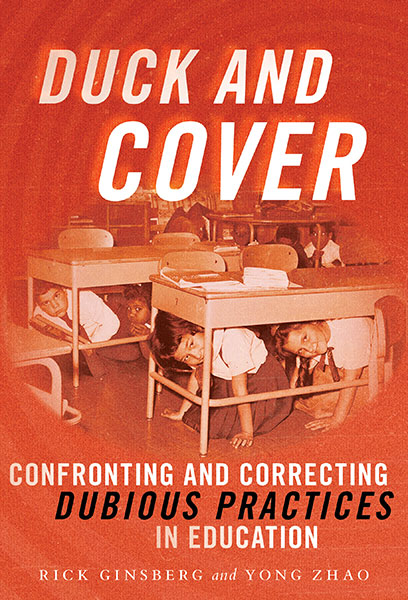
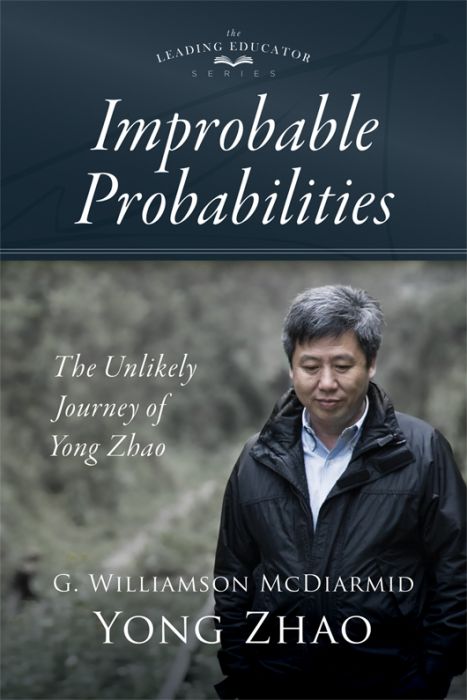
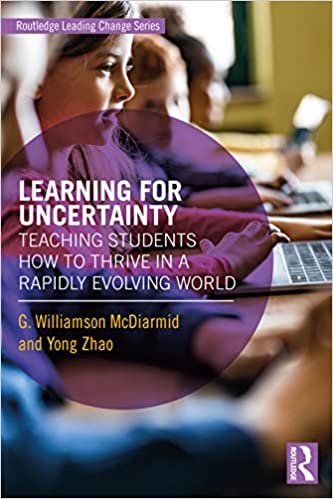
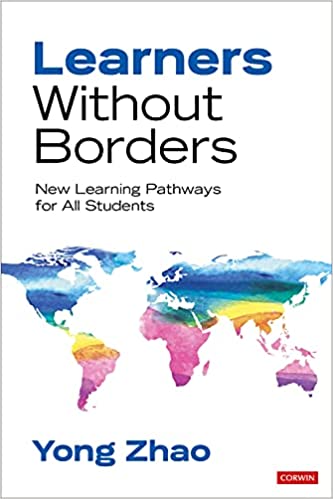



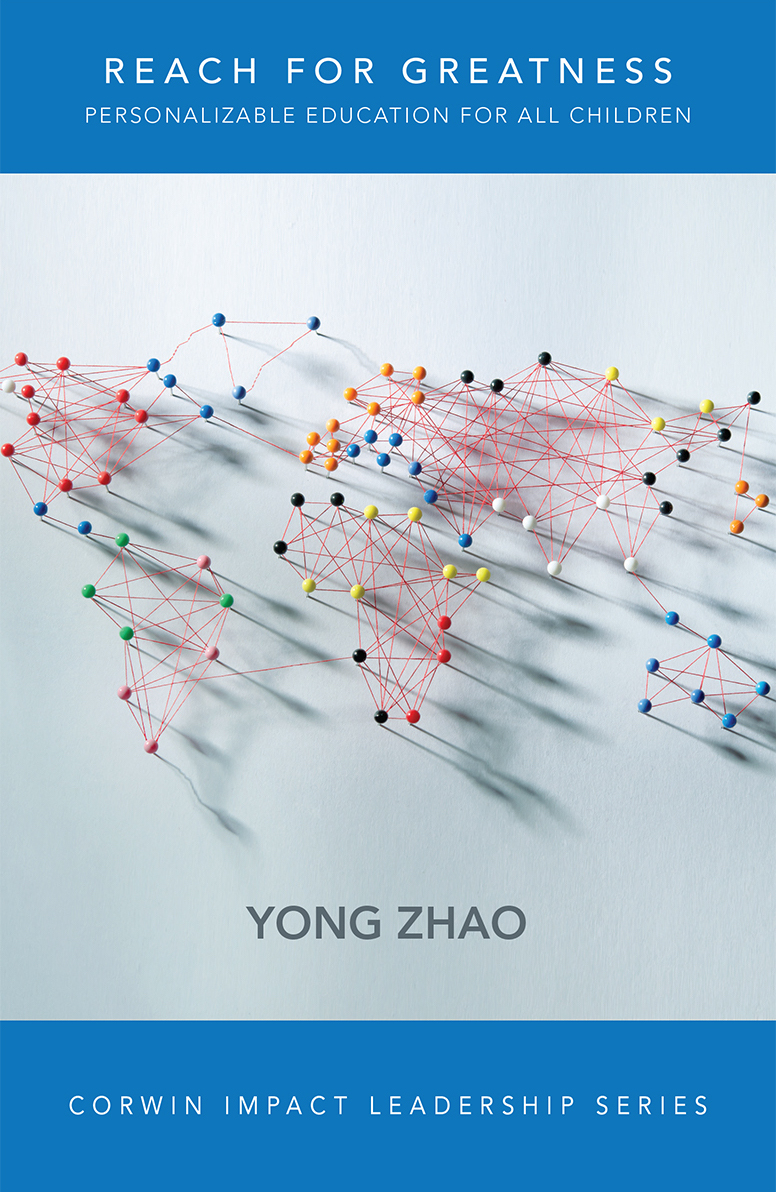
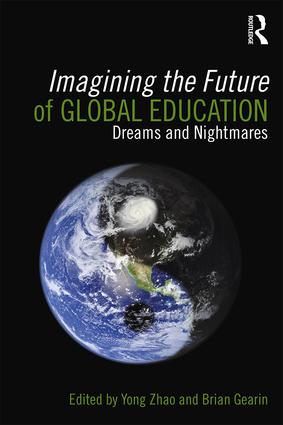
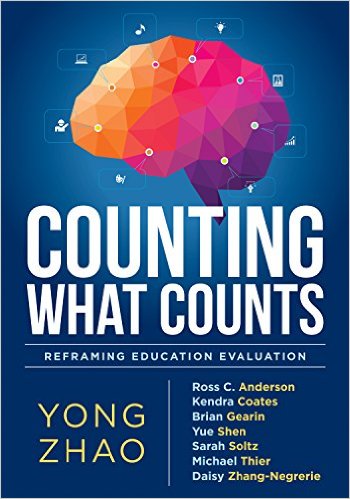
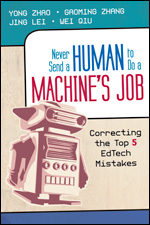
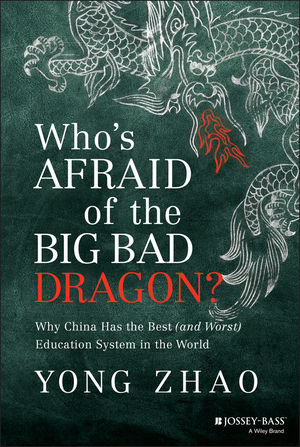
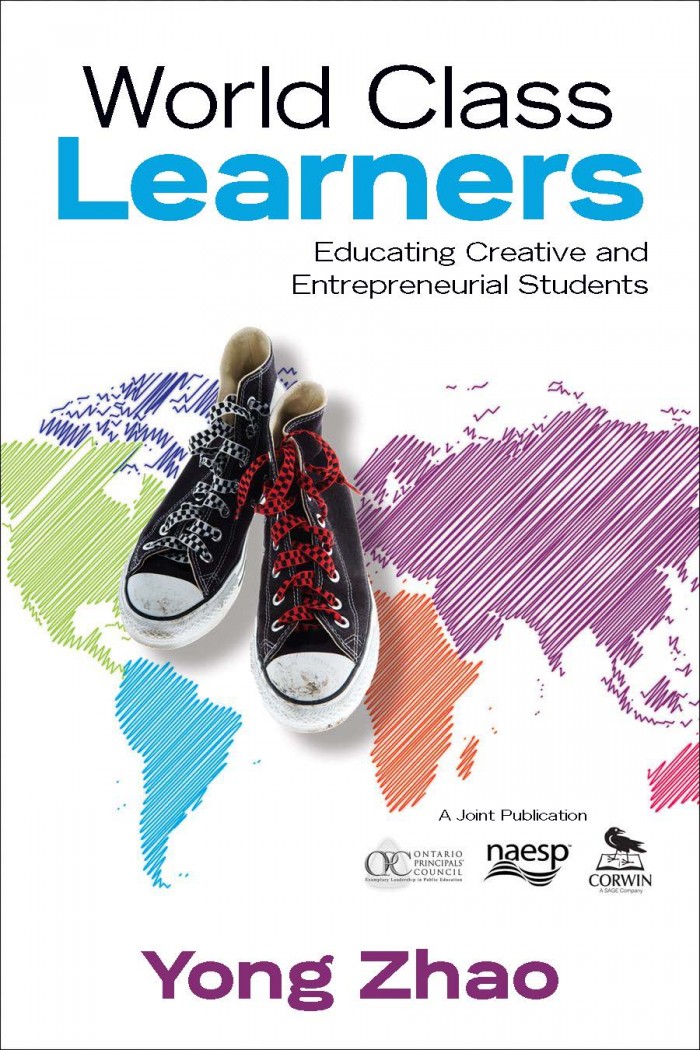

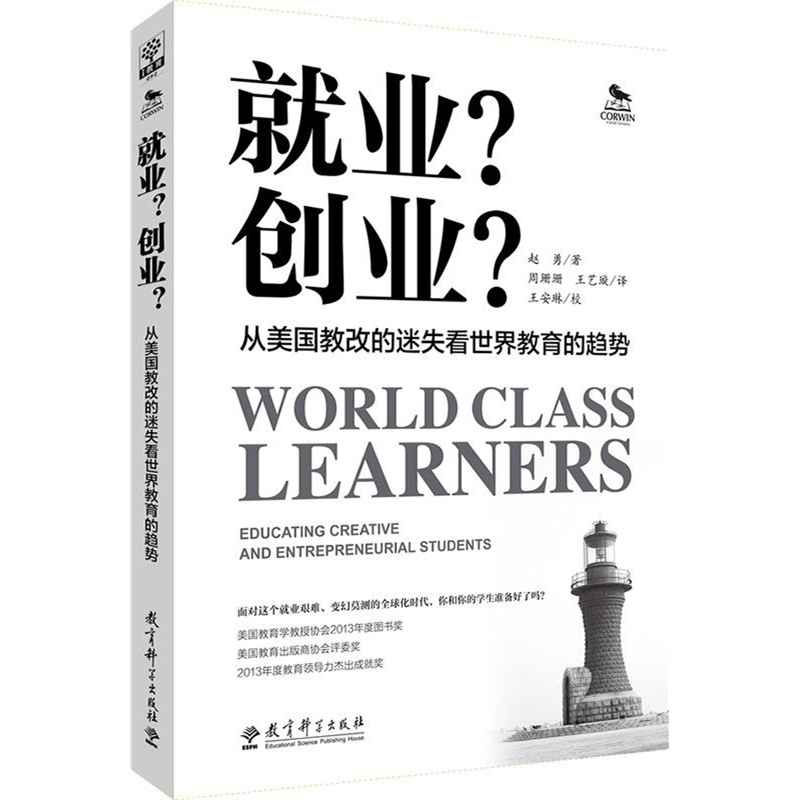











This reminds me of the book Outliers by Malcom Gladwell. He uses examples of much more genuine meritocracies (such as professional and semi-professional hockey) and shows how they are still dependent on “accidents of birth.” In the hockey example, children born right after the grade cut off are much more likely to be top hockey players than those born right before it. The simple reason is that the those born right after it are older by several months than others in their same grade. This makes them more likely to be physically talented at a particular point in time, and thus picked for special attention and teams. He likens this to gifted programs in school that often become self-fulfilling prophecies. That is, a great deal of the advances of these students can be attributed not to some innate ability but to the extra attention that someone identified as gifted (in school or hockey) gets. As he says, to those who have more is given.
[…] learning what students can do and not just finding what they can’t do (read: @yongzhaoed From Deficiency to Strength: Shifting the Mindset about Education Inequality)? In assessing and communicating student’s learning, do I notice, name & nurture or […]
What a great article. Every educator should read this!
[…] the “things dear to the hearts of adults.” Yet as Yong Zhao reminds us in urging the shift from deficits to assets, that’s life, and a good life at […]